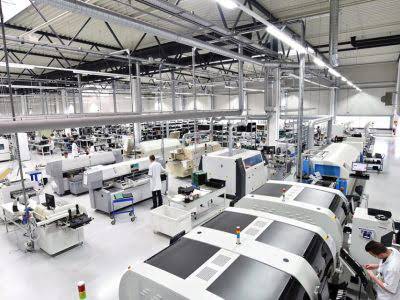
Manufacturing overhead is the sum of all the manufacturing costs except direct labor or direct materials costs. Tracking variable costs is important to enable more control over fluctuating costs and ensure better financial planning and pricing decisions. The systematic allocation of the cost of an asset from the balance sheet to Depreciation Expense on the income statement over the useful life of the asset. (The depreciation journal entry includes a debit to Depreciation Expense and QuickBooks a credit to Accumulated Depreciation, a contra asset account).

What is manufacturing overhead and what does it include?
It includes indirect production costs and is allocated to work-in-process (WIP) and finished goods inventory during the production process. While selling, marketing, managerial, and other general business expenses are also types of overheads, they aren’t deemed manufacturing overhead. Manufacturing overhead, or factory overhead, is a company’s indirect cost of production. Indirect costs are all expenses that can’t be directly attributed to producing goods or services but are still needed to keep a company functioning. Manufacturing overhead https://www.bookstime.com/articles/receipt-tracking-apps makes up the part of indirect expenses that are related to the manufacturing process.

Examples of Manufacturing Overhead Costs
Manufacturing overhead is referred to as indirect costs because it’s hard to trace them to the product. That overhead absorption rate is the manufacturing overhead costs per unit, called the cost driver, which is labor costs, labor hours and machine hours. Manufacturing overhead (MOH) cost is the sum of all the indirect costs which are incurred while manufacturing a product.

Depreciation and Maintenance
- For the past 52 years, Harold Averkamp (CPA, MBA) hasworked as an accounting supervisor, manager, consultant, university instructor, and innovator in teaching accounting online.
- While this approach helps streamline budgeting, estimated overhead is only a projection.
- A retailer’s product cost is the net cost from suppliers plus costs to get the product in place and ready for use (e.g. freight-in).
- In other words, everything that manufacturing couldn’t function without that isn’t direct labor or direct materials.
- For example, a bakery’s direct costs are flour and sugar, while overhead includes oven maintenance, electricity, and janitorial wages.
- The most significant advantage of including manufacturing overhead in your budget is that it lets you see where most of your monthly money goes.
This can include expenses such as a supervisor’s salary or the annual lease of your production facility. Since direct materials and direct labor are usually considered to be the only costs that directly apply to a unit of production, manufacturing overhead is (by default) all of the indirect costs of a factory. Manufacturing overhead is all indirect costs incurred during the production process.

Cost-Effective Methods in Product Design
- Some industries, such as metal fabrication, have multiple processes that are closely related and share many common resources.
- Even if you run a relatively waste-free business, there’s always room for improvement.
- With direct labor being reduced and manufacturing overhead increasing, the correlation between direct labor and manufacturing overhead began to wane.
- An excellent way to reduce losses due to defective materials or parts is by using quality control measures such as inspections during production and testing before shipping products to customers.
Prominent examples are property taxes, legal fees for compliance audits, various insurance policies related to manufacturing, inventory, and supply, etc. Some overheads can also be deemed semi-variable to further increase the accuracy of the manufacturing overhead rate. These costs partially depend on production levels but incur a base cost regardless of production activity. In manufacturing, the product manufacturing overhead consists of cost includes direct materials, direct labor, and manufacturing overhead.
- Working closely with manufacturers on case studies and peering deeply into a plethora of manufacturing topics, Mattias always makes sure his writing is insightful and well-informed.
- Rather, nonmanufacturing expenses are reported separately (as SG&A and interest expense) on the income statement for the accounting period in which they are incurred.
- Machinery breakdowns or the need for sudden repairs can lead to unplanned expenses, increasing the overall manufacturing overhead.
- However, if the company produces more units of the better-selling product than it should, it will incur additional costs.
- For example, suppose your factory is shut down due to weather conditions or another factor that affects business operations outside your control.
- He is especially interested in environmental themes and his writing is often motivated by a passion to help entrepreneurs/manufacturers reduce waste and increase operational efficiencies.
Indirect labor includes labor costs that don’t directly link to specific goods but are necessary for overall operations. It includes salaries for factory maintenance workers, supervisors, and quality control staff. MOH includes expenses such as indirect labor, indirect materials, utilities, and depreciation of equipment. If a company has many processes in its production line, it will have to spend more on direct materials, labor, and factory overhead. If a company reduces the number of operations, it can also save money by reducing these costs. This makes it possible to assign indirect labor costs to different products by using the same method for allocating direct labor costs to products.

Streamline Payroll With Secure Timesheets
You should also ensure that your employees are working at optimal efficiency levels so they do not waste time when they could complete tasks more quickly or thoroughly. While also ensuring that no one person can take advantage of their position within the company’s hierarchy by making purchases without permission from their superiors.

